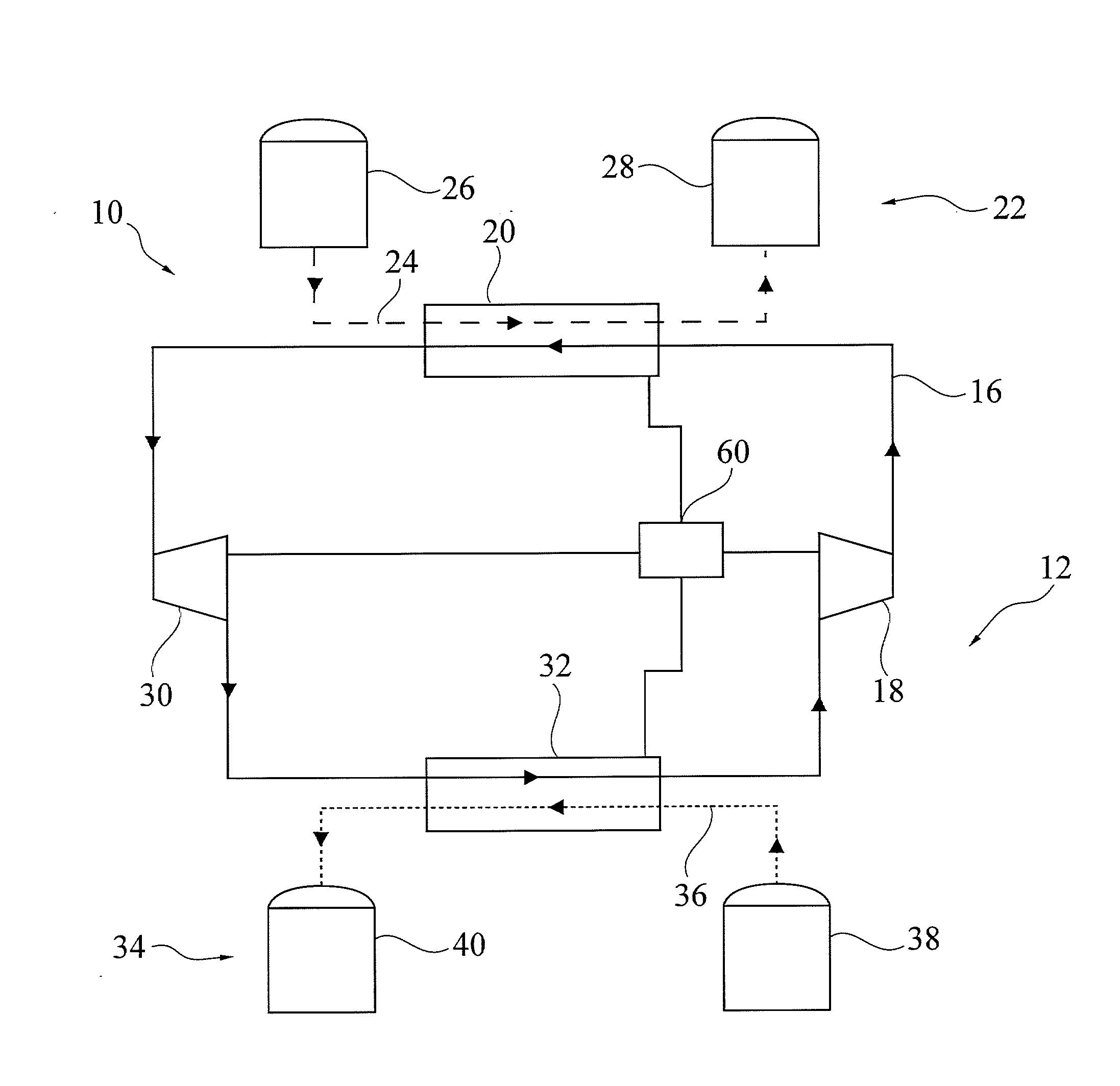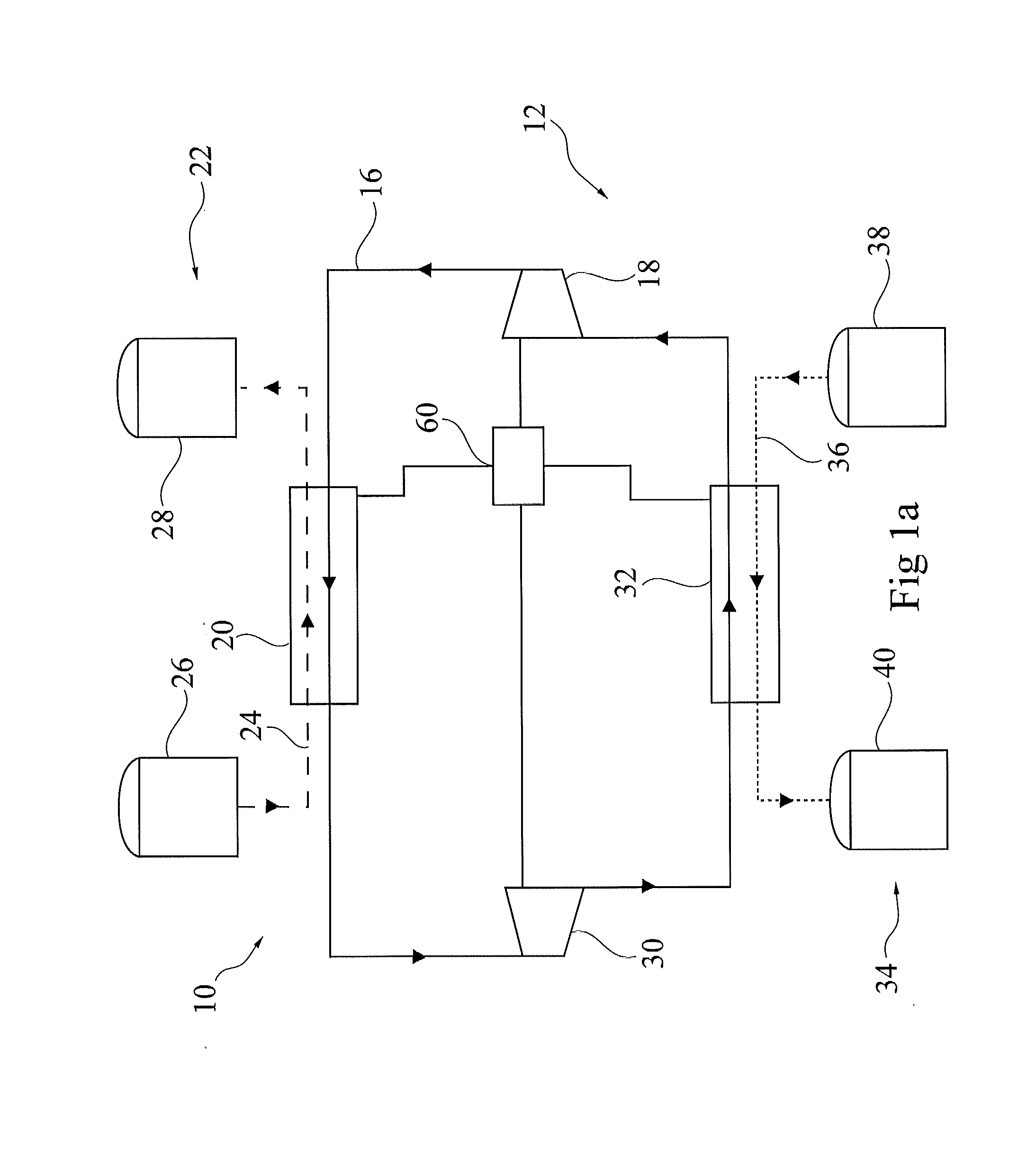Thermoelectric energy storage system
- Summary
- Abstract
- Description
- Claims
- Application Information
AI Technical Summary
Benefits of technology
Problems solved by technology
Method used
Image
Examples
Embodiment Construction
[0030]Exemplary embodiments of the present disclosure provide an efficient thermoelectric energy storage having a high round-trip efficiency and a minimal approach temperature, while minimizing the amount of required thermal storage medium, and also minimizing the cost.
[0031]An exemplary embodiment of the present disclosure provides a thermoelectric energy storage system for storing electrical energy by transferring thermal energy to a thermal storage in a charging cycle, and for generating electricity by retrieving the thermal energy from the thermal storage in a discharging cycle.
[0032]According to an exemplary embodiment of the present disclosure, the thermoelectric energy storage system includes a working fluid circuit configured to circulate a working fluid through a heat exchanger, and a thermal storage conduit configured to transfer a thermal storage medium from a thermal storage tank through the heat exchanger. The working fluid includes a zeotropic mixture.
[0033]In other wo...
PUM
 Login to View More
Login to View More Abstract
Description
Claims
Application Information
 Login to View More
Login to View More - R&D
- Intellectual Property
- Life Sciences
- Materials
- Tech Scout
- Unparalleled Data Quality
- Higher Quality Content
- 60% Fewer Hallucinations
Browse by: Latest US Patents, China's latest patents, Technical Efficacy Thesaurus, Application Domain, Technology Topic, Popular Technical Reports.
© 2025 PatSnap. All rights reserved.Legal|Privacy policy|Modern Slavery Act Transparency Statement|Sitemap|About US| Contact US: help@patsnap.com



